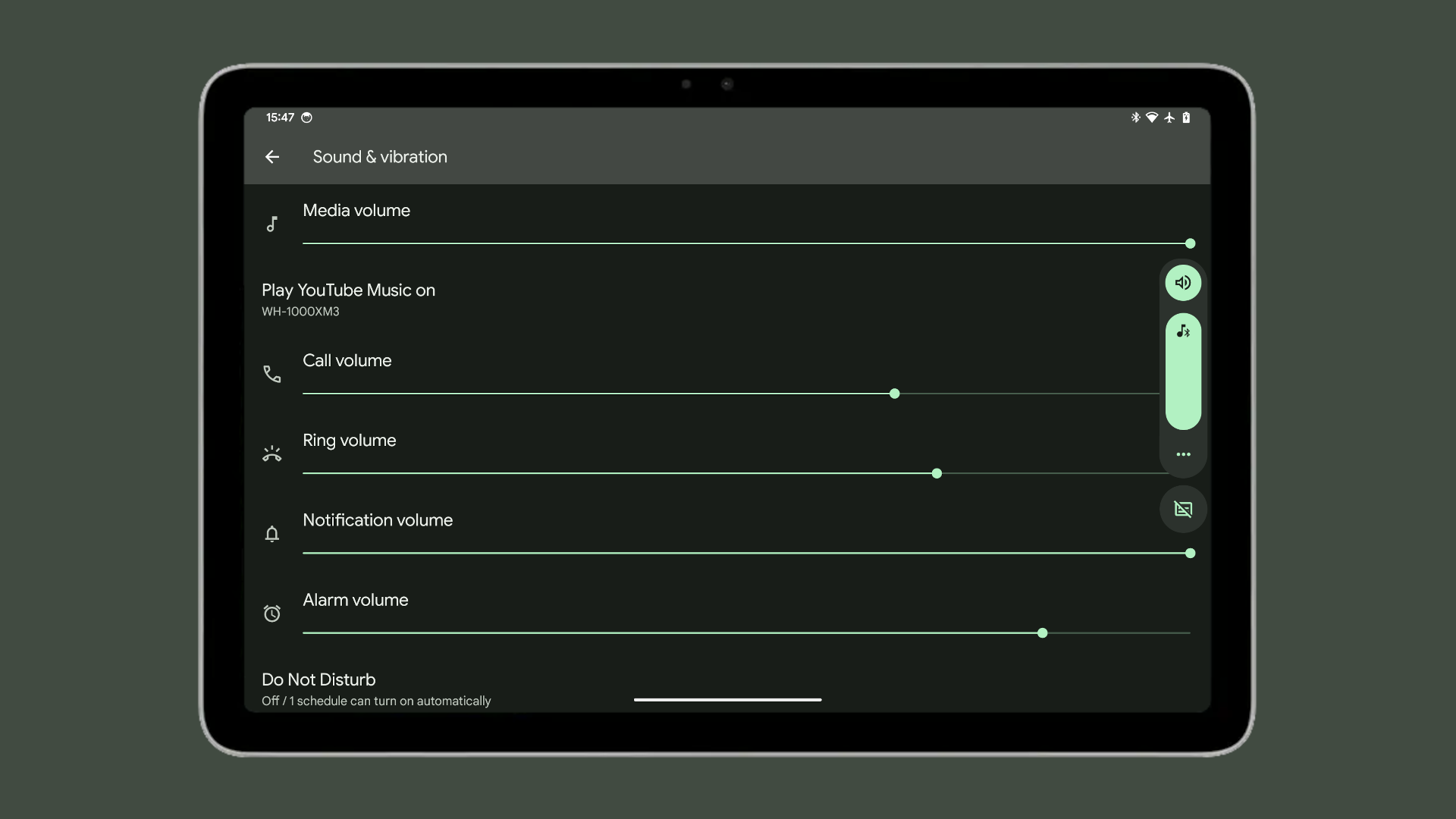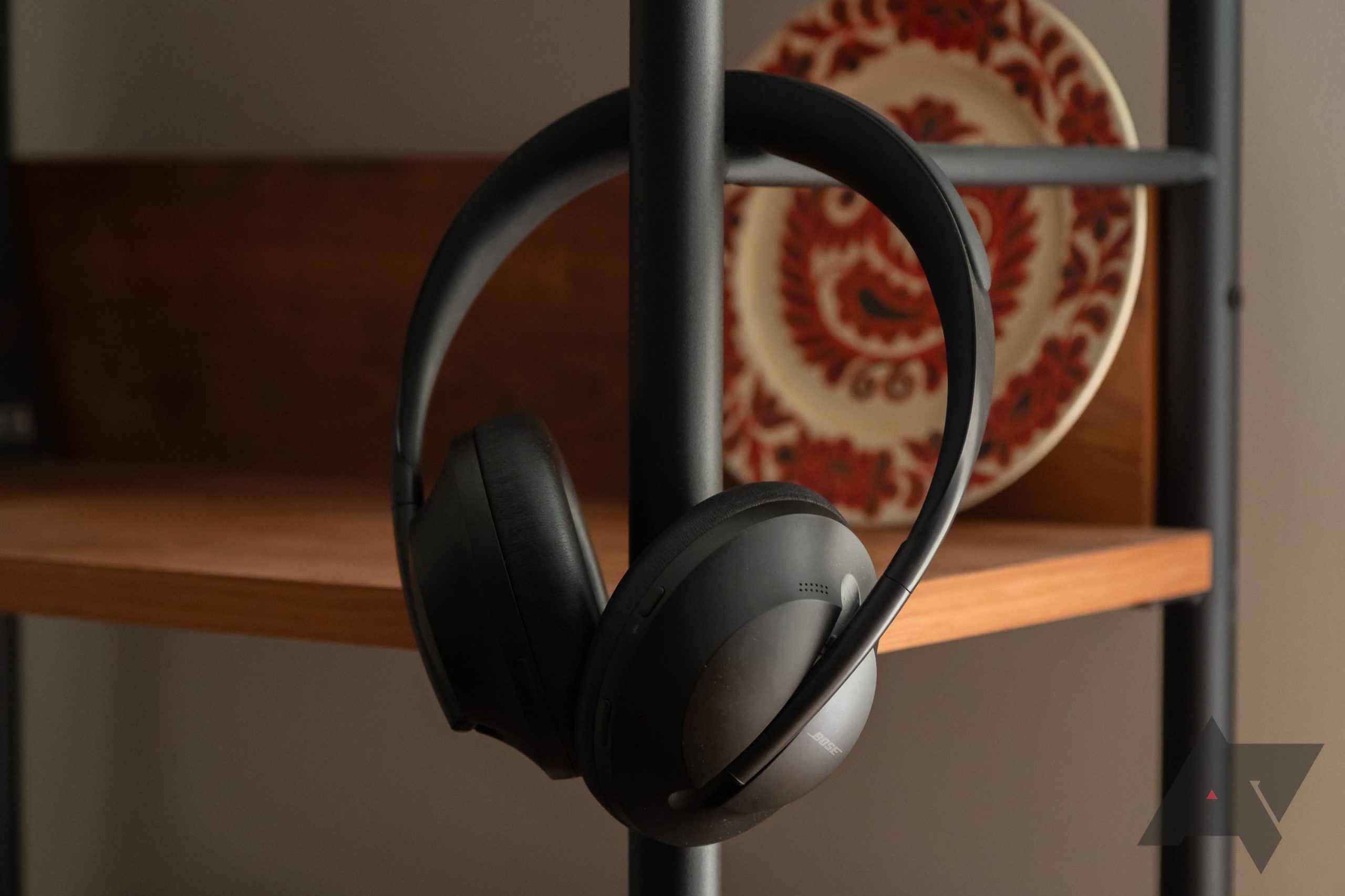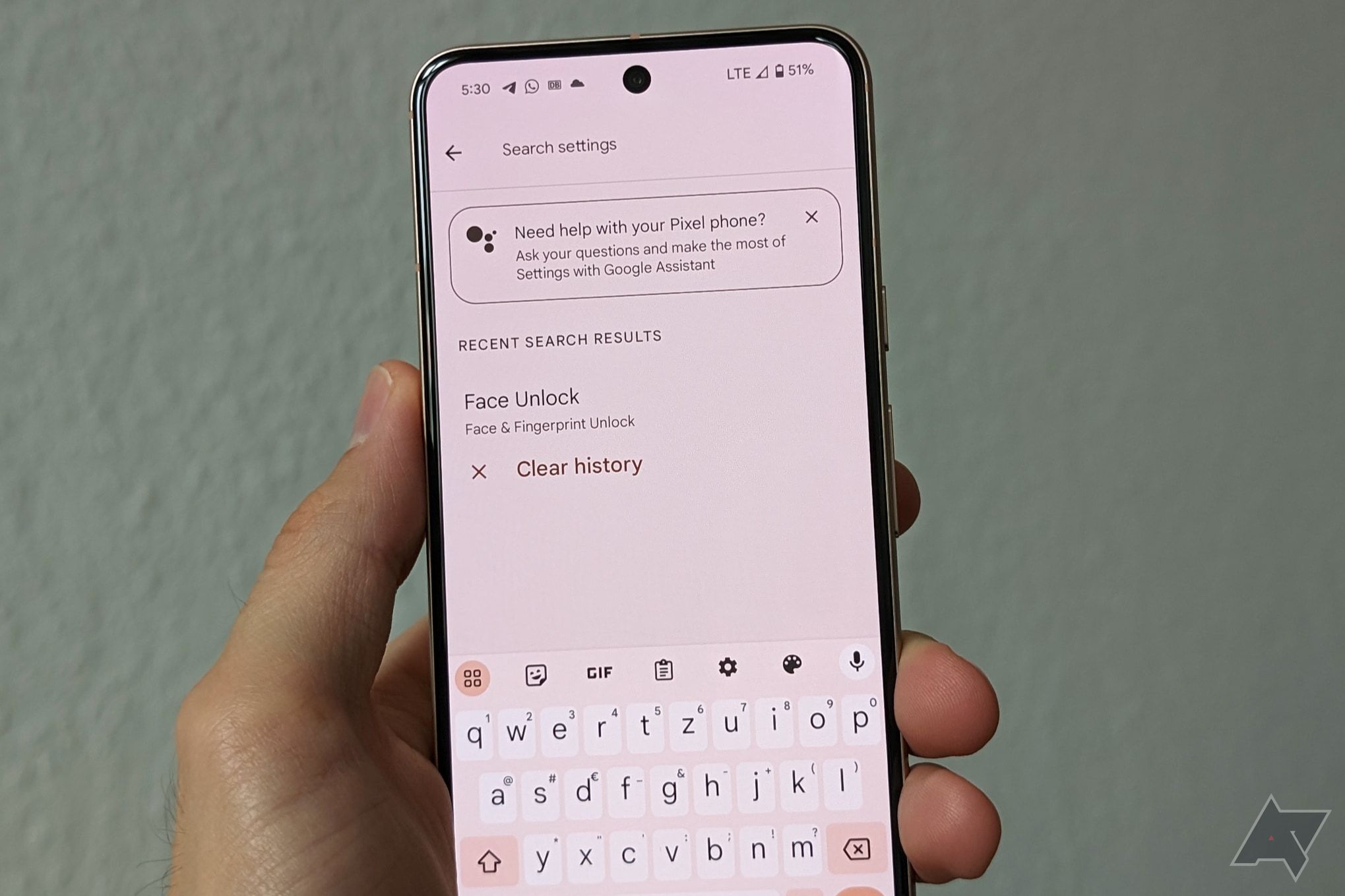Android 14’s ‘headphone loud sound alert’ characteristic will supply protection to your listening to by warning you at the same time as you pick up yourself listening to loud tune for too lengthy
In the occasion you’re jamming out to your current beats utilizing a nice pair of wired earbuds or headphones, it’s tempting to crank up the amount as excessive as conceivable so it’s likely you’ll perhaps perhaps perhaps also fully immerse your self in the tune. However whenever you listen in on tune at excessively excessive volumes for extended classes of time, at closing, you are going to irreversibly wound your listening to. That’s why experts counsel limiting your publicity to loud noises. Android has lengthy had a security characteristic that warns you at the same time as you strive and preserve stop the media quantity above a safe restrict, but this warning will also be easily overlooked. Android 14 would perhaps be more proactive in preserving your listening to with its fresh headphone loud sound alert characteristic.
For these of you who aren’t acquainted, Android devices offered in the EU point out a warning when headphones are connected and the user tries to preserve stop the output quantity level above 85 dB. You would perhaps be in an area to procure the warning and lift the output quantity level to a most of 100 dB, but the warning will reappear after 20 hours of tune playback to remind you of the likely threat to your listening to.
The European Committee for Electrotechnical Standardization (CENELEC) adopted the IEC 62368-1 security traditional for audio/video devices offered in the EU. Android’s safe media quantity warning follows the recommendations outlined on this doc, which has undergone more than one revisions over the years. Essentially the most most contemporary became adopted earlier this year, so in advise to care for up with basically the most contemporary recommendations, Google is adding a fresh security characteristic in Android 14 that warns you at the same time as you’ve been listening to tune at unsafe quantity ranges for too lengthy.
This characteristic, called “headphone loud sound alert,” became talked about at Google I/O 2023 in direction of the “What’s fresh in Android Accessibility” session. Google says that with this alert enabled in Android 14, “you are going to also be notified for outrageous lengthy hours of audio consumption with excessive quantity on your headphones.” Google didn’t make clear blueprint more on the time, but I’ve been tracking this characteristic since I first caught wind of it months previously. Snappily-forward to this day, and I now have a more total working out of the blueprint in which it in actuality works, due to the Google’s most contemporary source code initiating.
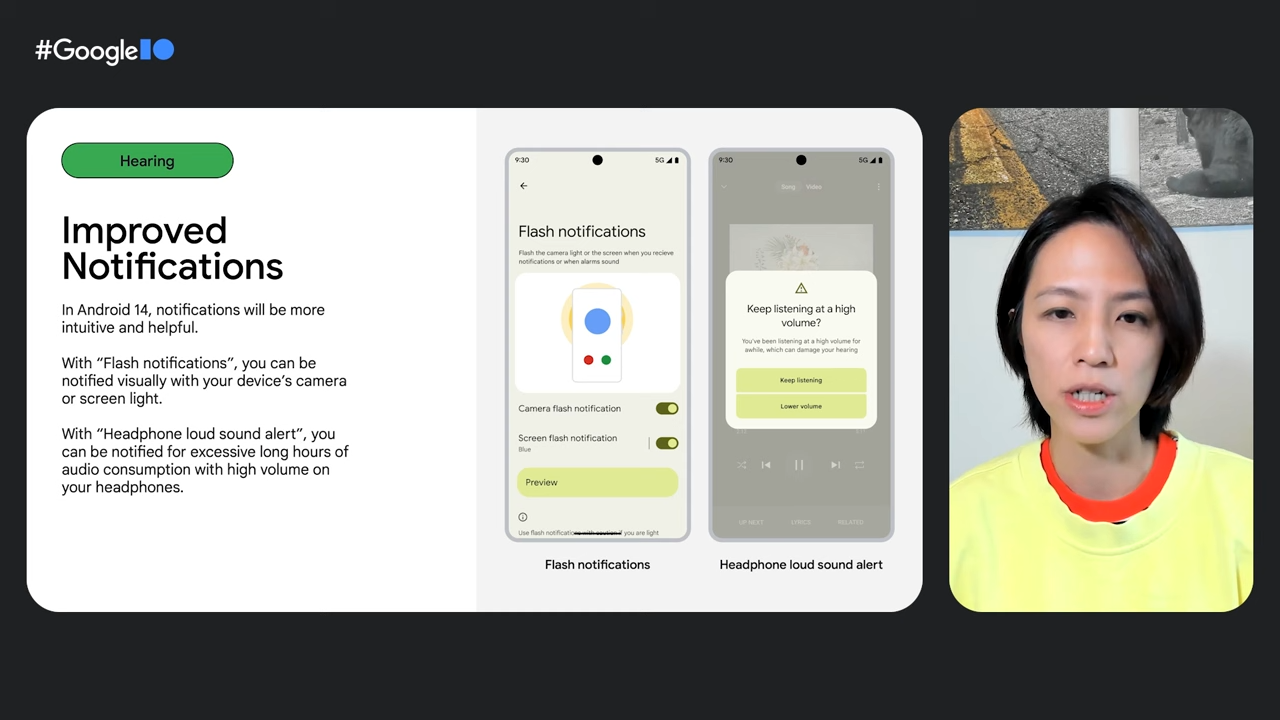
How Android 14’s headphone loud sound alert characteristic works
With the initiating of the SDK 34 source code, I became in an area to make a choice up Google’s description for the methodology the headphone loud sound alert characteristic works below-the-hood. It looks, the characteristic operates with “computed sound doses” (CSDs) unlike a build quantity index. Android performs a “frequency-dependent analysis” of the audio signal to estimate “how loud and potentially wicked the signal recount material is.” This analysis is blended “with the amount attenuation/amplification applied to it and integrated over time to procure the dose publicity over a 7 day rolling window.”
Android 14 has diversified warnings for when the CSD reaches sure thresholds. There are warnings for a “short-term publicity” to boot to “1X” and “5X” the CSD it’s likely you’ll perhaps perhaps perhaps also “safely listen in on in a week over headphones. The genuine UI behaviors applied by Android are “outlined in IEC 62368 in ‘Safeguards against acoustic energy sources’”. This particular doc costs a entire bunch of bucks to build, but due to the a source, I became in an area to get my hands on it. I also did the sane element and build on a YouTube video that performs an air horn sound for 10 hours (WARNING: VERY LOUD) to ask what the genuine warnings ask fancy in Android 14.
At 1X, 2X, 3X, and 4X the CSD, Android posts a notification that reads “quantity diminished to safer level. Headphone quantity has been excessive for longer than advised.” At 5X the CSD, Android posts a notification that reads “quantity diminished to safer level. Headphone quantity has exceeded the safe restrict for this week.” As for the “short-term publicity” notification, it reads “loud sound detected. Headphone quantity has been higher than advised, which is interesting to wound your listening to.”
Android 14’s warning when the computed sound dose (CSD) has reached “1X”, “2X”, “3X”, and “4X” the advised level. (left); the warning when the CSD reaches “5X” the advised level (fair)
It took hours of playback to build off every 1X-5X warning on my Pixel 6a working Android 14 connected to a pair of wired USB-C earphones — about 3 hours for every subsequent warning to seem, in actuality. The genuine time it takes to build off these warnings is determined by how loud the sound signal is calculated to be, of direction. Android measured the sound level of the air horn video to be spherical 93 dB, so it wasn’t even loud ample for the short-term publicity warning to expose. I needed to make use of a particular audio file to build off that warning, as confirmed below. (You would perhaps be in an area to ask Android’s calculations of the sound level during the Settings.Worldwide.audio_safe_csd_dose_records cost.)
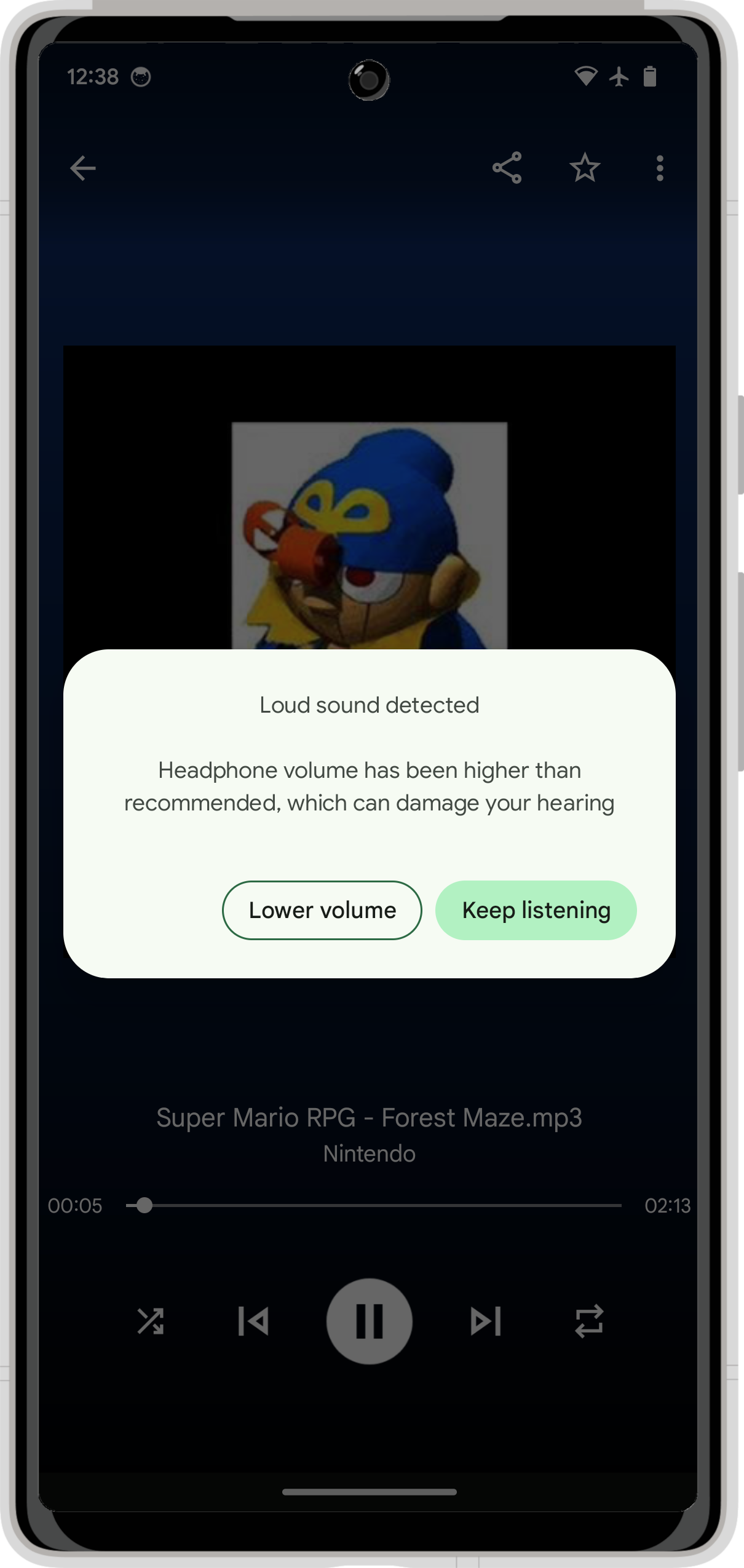
Android’s “short-term publicity” warning, which is precipitated when the sound level is computed to be over 100 dB
If you’re questioning, no, Android would not display screen the sound dose for tune performed over Bluetooth audio system or headphones, because the genuine sound level of these devices will also be build independently of the Android machine. I verified this by tracking the swap over time in Settings.Worldwide.audio_safe_csd_current_value, which holds the sizzling cost of the CSD. This cost would very best increment for me after I performed the air horn video while connected to my USB-C earphones, and no longer my Bluetooth headphones.
If you’re also questioning in regards to the genuine sound ranges over time that build off these warnings, it’s going to level-headed work as follows: Non everlasting publicity happens when the sound level is ≥ 100 dB. 1X CSD, interestingly also known as “RS2” in the doc, is when the sound level exceeds 80 dB for a 40-hour interval. The doc says that users desires to be warned for every 100% raise in CSD, which is why Android presentations the identical warning at 2X, 3X, and 4X the CSD. If the user doesn’t acknowledge these warnings, Android will lower the amount output level to “RS1”, which refers to when the life like sound power is below 85 dB.
What devices will Android 14’s headphone loud sound alert appear on?
As I previously talked about, Google is adding this characteristic to conform with regulatory requirements in the EU. That’s why Android 14’s headphone loud sound alert characteristic isn’t enabled by default. Since I are living in the US, I needed to manually enable it in advise to build off the warnings. Here’s how Android determines whether or no longer to enable the characteristic:
- Is the machine property “audio.safemedia.csd.force” build to appropriate? This property forces the characteristic to be enabled regardless of diversified components. Here is likely very best outdated for testing and/or devices offered strictly within the EU.
- Is the DeviceConfig cost “enable_csd” below the media namespace build to appropriate? This property will also be remotely overridden by Google Play Companies and products. My guess is that Google will flip this flag for devices working in the EU.
- Is the “config_safe_sound_dosage_enabled” flag build to appropriate in the framework? This flag became build to appropriate in Android 14 Beta 2, which is why some users saw these warnings, nonetheless it’s been build to flawed in every subsequent Android 14 beta.
Would not Android/Samsung have already obtained this characteristic?
Earlier than I enact, I want to handle something that I do know folk will carry up if I don’t. No, Android didn’t have already obtained this characteristic. You’re complicated it with the safe media quantity restrict characteristic that I already talked about on this article. That one warns the user when they strive and preserve stop the amount above a build quantity index, whereas the fresh characteristic warns the user if they’ve been listening to tune for a while at a quantity level above the advised computed sound dose of the audio signal.
Volume display screen in One UI 5.1.1 on the Galaxy Z Fold 5.
The 2d level is about whether or no longer diversified OEMs, particularly Samsung, have already obtained this characteristic. Yes, Samsung already has a the same characteristic, but many of you have been also complicated the safe media quantity restrict characteristic in One UI with the characteristic described on this article. Samsung’s model of this characteristic is disabled by default in One UI in a lot of regions. It would possibly well perhaps perhaps perhaps even be stumbled on below Settings > Digital wellbeing and parental controls > Volume display screen.
Android 14 would perhaps be hitting stable in barely a pair of more weeks, and as steadily we are going to ask updates for existing phones trickle out over the months to discover.

